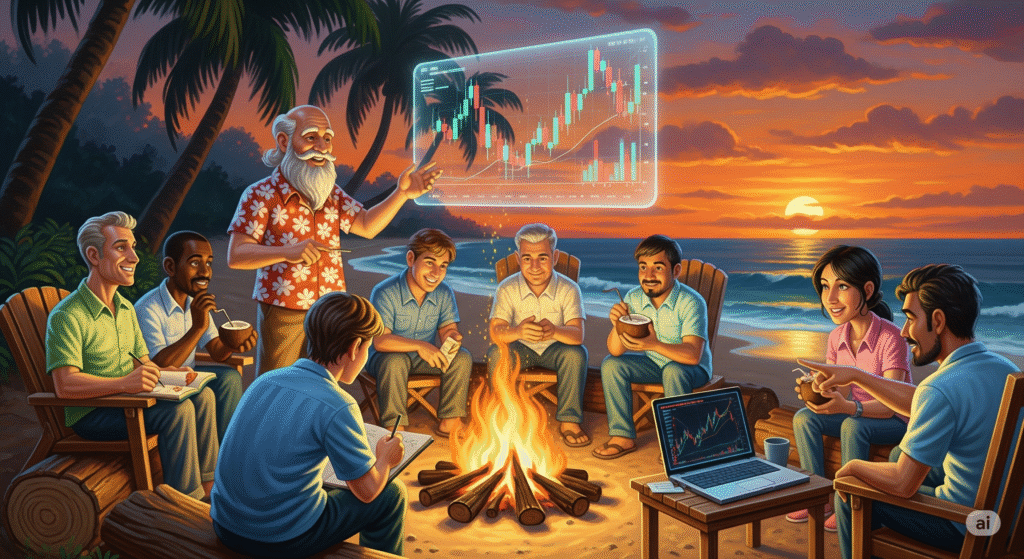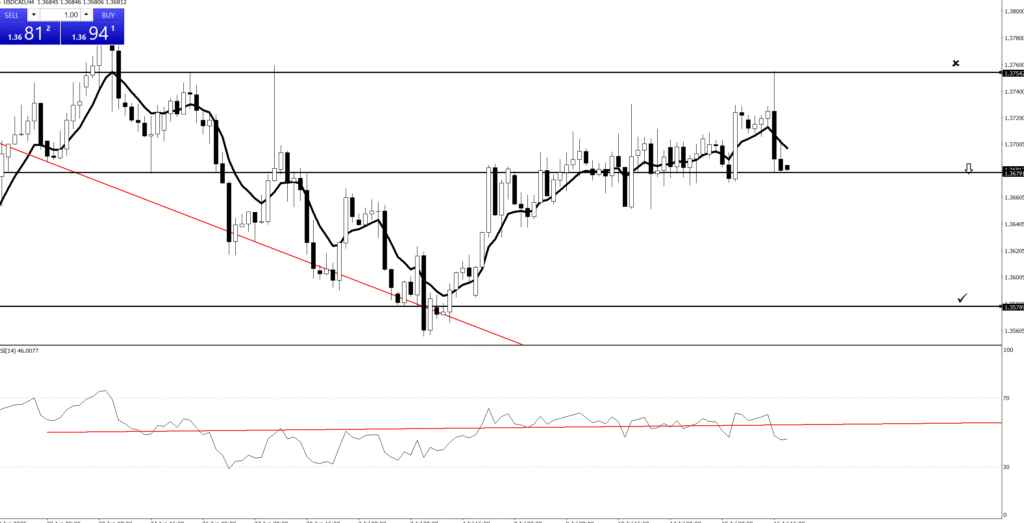16. The Power of Event-Areas


Alright, my delightful market divas and chart comedians! We’ve sailed the seas of trends, dodged the trickster Hikkake, and even learned to appreciate the wobbly wisdom of wicks. But now, let’s talk about the places on the chart where the market truly becomes a drama queen, throws a tantrum, or makes a grand, pivotal decision.
I’m talking about Event Areas!
Event Areas: The Market’s Reality TV Show Hot Spots!
Imagine your price chart is less like a boring spreadsheet and more like a high-stakes, ridiculously dramatic reality TV show set right here in our beloved Barcelona. And certain price levels? Those are the show’s prime locations, where all the really juicy stuff happens!
The “Velvet Rope Bouncer” (Resistance Zones): This is that exclusive nightclub where the price repeatedly tries to get in, flashing its cash (buying power!), but there’s a giant bouncer (the sellers!) always pushing it back. Price hits this line, pauses, bumps, and often gets rejected with a stern, “Not today, darling!” When the price approaches this area, it’s an “event” because everyone’s waiting to see if it finally sweet-talks its way in, or gets hilariously tossed out again!
The “Comfy Couch Recovery Zone” (Support Zones): This is like the cozy, supportive sofa in the green room where contestants (prices!) keep falling, but then something catches them. Buyers swoop in like a caring production assistant, offering a warm blanket and a juice box, saying, “There, there, you’re safe here!” When price hits this spot, it’s an “event” because everyone’s watching to see if it’ll bounce back up with renewed vigor or finally sink through the cushions.
The “Confession Booth” (Previous Major Highs/Lows): These are the exact spots where the market previously revealed its deepest secrets, its biggest triumphs, or its most embarrassing meltdowns. When price revisits these old high/low levels, it’s an “event” because it’s like a reunion episode – will the old drama resurface? Will past behaviors be repeated? Everyone’s on the edge of their seats!
The “Voting Booth of Destiny” (High Volume Breakout/Breakdown Zones): Sometimes, after much deliberation, the market makes a massive decision, breaking out (or down) with huge, explosive candles and surging volume. This is like the grand finale where the winner is announced! These are undeniable “event areas” because they scream, “This is where the shift happened! A new era begins!”
Why These Market Melodramas Are Your Path to Profit!
Professionals aren’t just passively watching the show; they’re reading the script!
They’re Predictable Plot Twists: Price tends to react at these areas. Knowing where they are helps you anticipate potential reversals, bounces, or dramatic breakthroughs.
They’re Built-In Stage Directions: These zones tell you where the market has previously struggled or found strength. They’re like big, flashing arrows pointing to where the next big scene is likely to unfold.
They Frame Your “Best Setups”: Most of those fantastic trading setups – the pullbacks, the false breaks, the strong breakouts – happen at or around these very “event areas.” They’re the perfect backdrop for your trading strategy to shine!
So, the next time you’re analyzing a chart, don’t just see lines and numbers. See the market’s ongoing reality show! Identify those Event Areas – the bouncer’s velvet rope, the comfy couch, the confession booth, the voting booth of destiny – and get ready to trade the drama. Because these are the spots where the market’s true character is revealed, often with a hilarious and profitable twist!
💰Quotes:
“Enter the trade — then sit on your hands like a monk!”
“We don’t click and panic. We click and chill.”
“Traders who wait, get paid. Traders who fidget… donate!”
“We enter the trade, then do absolutely nothing like pros.”
“Let the market work. You’re not its boss.”
💰Normal Tone Slogans:
“Enter with a plan, then let the trade play out.”
“The work is in the setup — the result comes with patience.”
“We don’t babysit trades. We trust our edge.”
“Entry is action. Waiting is discipline.”
“After entry, emotion has no place — only patience.”

Alright, my fellow chart-gazing comedians and market strategists! We’ve talked about the market’s moods, its sneaky tricks, and even its brief moments of introversion. But now, let’s discuss the places on the chart where the market really likes to make a scene, where all the drama unfolds, and where the big decisions are made.
I’m talking about Event Areas!
Event Areas: The Market’s Favorite Hangouts (Where All the Juicy Gossip Happens!)
Imagine your price chart isn’t just a bunch of lines and candles, but a bustling city map of Barcelona. And in this city, there are certain spots that are always busy, always attracting a crowd, and always the center of some kind of “event.”
The “Support Street Party” (Support Zones): This is like a popular, sturdy street where, no matter how many times the price tries to fall through it, it just keeps bouncing back up! It’s where the “buyers” are always throwing a party, catching the falling price like a dropped ice cream cone before it hits the ground. When price hits this area, it’s an “event” because everyone’s watching to see if the buyers can keep the party going!
The “Resistance Rooftop Bar” (Resistance Zones): This is the exclusive, high-end spot that price just can’t seem to get into. Every time it tries to climb higher, the “sellers” are there, acting like bouncers, pushing it back down. When price approaches this area, it’s an “event” because everyone’s waiting to see if it can finally break through the velvet rope or if it’ll be rejected again.
The “News Flash Plaza” (Areas of Significant News/Volume): Sometimes, a major news announcement (like a company’s earnings report or a central bank decision) hits, and suddenly, that quiet little plaza on the chart turns into a chaotic, high-volume mosh pit! The price goes wild, creating huge candles and leaving behind a clear “event area” where everyone remembers exactly what happened.
The “Previous Crime Scene” (Old Highs/Lows): These are like historical landmarks on the map. Price might revisit an old high or low from weeks or months ago, and suddenly, that area becomes an “event” again. Why? Because traders who bought or sold there before might be looking to get out, or new traders might see it as a significant pivot point. It’s like revisiting the scene of a famous market crash (or boom!) and seeing if history repeats itself.
Why These “Event Areas” Are Your Market Compass!
Professionals aren’t just randomly throwing darts at a chart. They’re like seasoned tour guides, knowing exactly where the action is, where the crowds gather, and where the big decisions are made.
They’re Magnets for Attention: These areas are where a lot of orders are clustered. Price tends to react strongly when it hits them.
They Provide Context: Knowing where the “event areas” are helps you understand why price is doing what it’s doing. Is it bouncing off a party street? Getting rejected from an exclusive bar?
They Offer High-Probability Trade Locations: Many “best setups” (like pullbacks, false breaks, or breakouts) occur at or around these event areas. They’re the prime real estate for your trading plan.
So, the next time you’re looking at your chart, don’t just see lines. See the bustling city, identify those “event areas,” and understand that these are the places where the market’s most important stories are told, and where you, the savvy trader, should be paying the most attention! They’re where the market’s true character is revealed, often with dramatic flair!
💰Quotes:
“Enter the trade — then sit on your hands like a monk!”
“We don’t click and panic. We click and chill.”
“Traders who wait, get paid. Traders who fidget… donate!”
“We enter the trade, then do absolutely nothing like pros.”
“Let the market work. You’re not its boss.”
💰Normal Tone Slogans:
“Enter with a plan, then let the trade play out.”
“The work is in the setup — the result comes with patience.”
“We don’t babysit trades. We trust our edge.”
“Entry is action. Waiting is discipline.”
“After entry, emotion has no place — only patience.”
